- Type of Hakhshara
- Middle Hakhshara (Mi-Ha), regular Hakhshara
- Founded
- 1934
- Opened
- September 1934
- Closed
- November 1938
- Operating Area
-
4 hectareapproximately 16 acres of farmland, meadows and gardens
- Areas of Training Offered
-
horticulture, agriculture, animal husbandryarable farming (grain, potatoes and beets), animal husbandry (4 cows and calves in addition to taking care of the stalls of 3 Jewish farmers; 50 chickens), meadows, pastures, farm nursery
- Description
-
It is documented that individual halutzim of the Jungjüdischer Wanderbund (young Jewish hiking organization) and the HeHalutz were already living and working in Grüsen as early as between 1924 and 1927. In 1925, it was referred to as a “Kosher center”, although the halutzim were spread out among various farms in the area.
On August 17, 1934, Gerhart Boltes, a tiler from Kassel, appeared before the district administration office in Frankenberg and explained that the youth department HeHalutz of the local Zionist group in Kassel was planning to place four boys and two girls with the farmer and innkeeper Jacob Marx in Grüsen for around six months. They were to be housed with the Jewish farmers in Grüsen to receive agricultural training in preparation for emigration to Palestine. Boltes asked whether there were any objections to this. Less than a week later, on August 23rd, he repeated his request. The district administrator then called the state police in Kassel and received the reply that the matter was known to them and that no objections would be raised. The training period in agriculture was necessary so that the Jews could receive the immigration certificate for Palestine. After consulting the head of the local police, the district administrator also had no objections, as he recorded in a memo dated August 28, 1934.
The Marx inn in Grüsen existed from 1872 to 1934, during which time it was the only inn in the village. At the beginning of the 1930s, about 300 people lived in Grüsen; more than 15 per cent of whom were Jewish. Besides trade, most of the Jewish population also did some farming. For those young Jews who wanted to emigrate and receive agricultural training in Grüsen, Jacob Marx (1960-1940) leased or rented all of his fields, meadows and gardens, as well as living quarters, stables and barns to the Reich Representation of Jews in Germany in Berlin-Charlottenburg. On the northern side of the courtyard there was a building with a long, covered staircase leading to the dance hall of the inn. Below it were stables. The dance hall and the lounge next to it were made into common living quarters for the participants.
Up to 40 young people lived and worked for some months on the kibbutz HagShamah in Grüsen, with some remaining more than a year. From 1937, Grüsen also served as a site for a middle Hakhshara. During its existence from the summer of 1934 to the fall of 1938, more than 140 participants—men and women from all over the German Empire, including foreign nationals—completed their training there. Every 14 days, the management had to prepare an attendance list for the district administration office in Frankenberg, which then forwarded it to the Gestapo in Kassel.
According to what Heinz Brandt learned from older residents at that time, the relationship between the young people and the locals was supposed to have been good. The young people sought contact to the villagers and helped the local farmers with threshing. A former participant confirmed that in the winter, Jews and Christians went into the forest to cut wood together. One of the Jewish participants is even said to have been a member of the local sports club as a soccer player.
However, the freer lifestyle of the Jewish participants, who mostly came from big cities, compared to the local villagers was not without consequences. They were repeatedly found bathing in the ponds of the Haina forests scantily clad or completely undressed. In August 1935, the Haina local police filed a complaint against a couple because they had “grossly violated the morals and sense of shame of the rural population and caused a public nuisance with their behavior”. Shortly thereafter, the young man was taken into “preventative detention”.
The most serious incident before the November Pogrom took place on the evening of July 14, 1938, when Nazis (members of the SS and the SA as well as Hitler Youth) from Haina and the surrounding area attacked the site in civilian clothes under the command of the local Nazi party group leader as part of a “punitive expedition” in retaliation for an alleged insult of the “Führer” made by residents of the kibbutz. They marched to Grüsen singing Nazi songs and shouting “death to the Jews”. Once they got there, they spread out and began attacking not only the housing of the Jewish participants, but also the homes of the Jewish residents. Panicking, the residents of the kibbutz jumped out of the windows and fled into the open field; whoever did not manage to escape was beaten.
After the November Pogrom in 1938, the kibbutz’ common living area served as a provisional jail for the Jews arrested in Grüsen, Gemünden and Rosenthal, including the director of the Hakhshara, Dr. Louis Koopmann and several participants. They were then loaded onto a bus and deported to the Buchenwald concentration camp via Kassel. On September 22, 1938, the Geheimes Staatspolizeiamt (Secret State Police Office) in Berlin instructed the Gestapo in Kassel to immediately release the participants of the retraining centers in Grüsen and Gehringsof (near Fulda). As there was still a great interest in Jewish emigration and the retraining centers served to prepare those Jewish men and women who wished to emigrate, their operation should not be hindered any longer. However, after their release, the Jewish participants quickly packed their bags and left Grüsen; most of them tried to get out of Germany as soon as possible.
On September 11, 1938, the gendarme in Gemünden reported to the district administration office that there was something between 20-25 hundredweights of scrap iron at the “Zionist camp” in Grüsen and requested permission to have it picked up by a scrap metal dealer in Frankenberg as soon as possible. The livestock had already been sold off earlier. The property itself was sold by Jacob Marx to a resident of Grüsen not long afterwards.
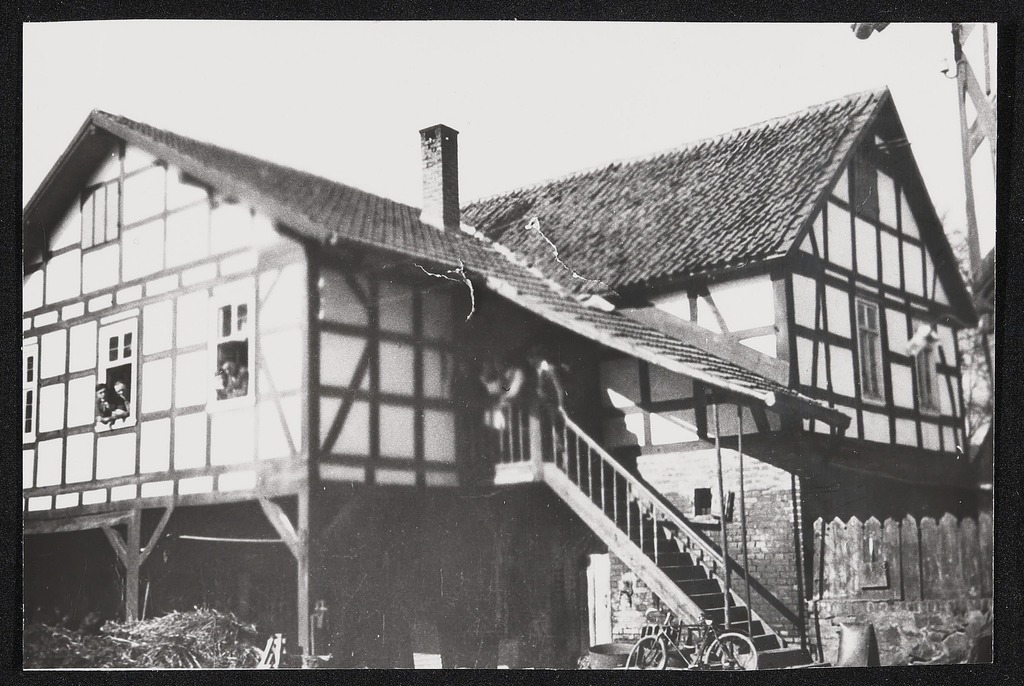
© Frankenberger Geschichtsverein, Nachlass Heinz Brandt

© Frankenberger Geschichtsverein, Nachlass Heinz Brandt

© Frankenberger Geschichtsverein, Nachlass Heinz Brandt
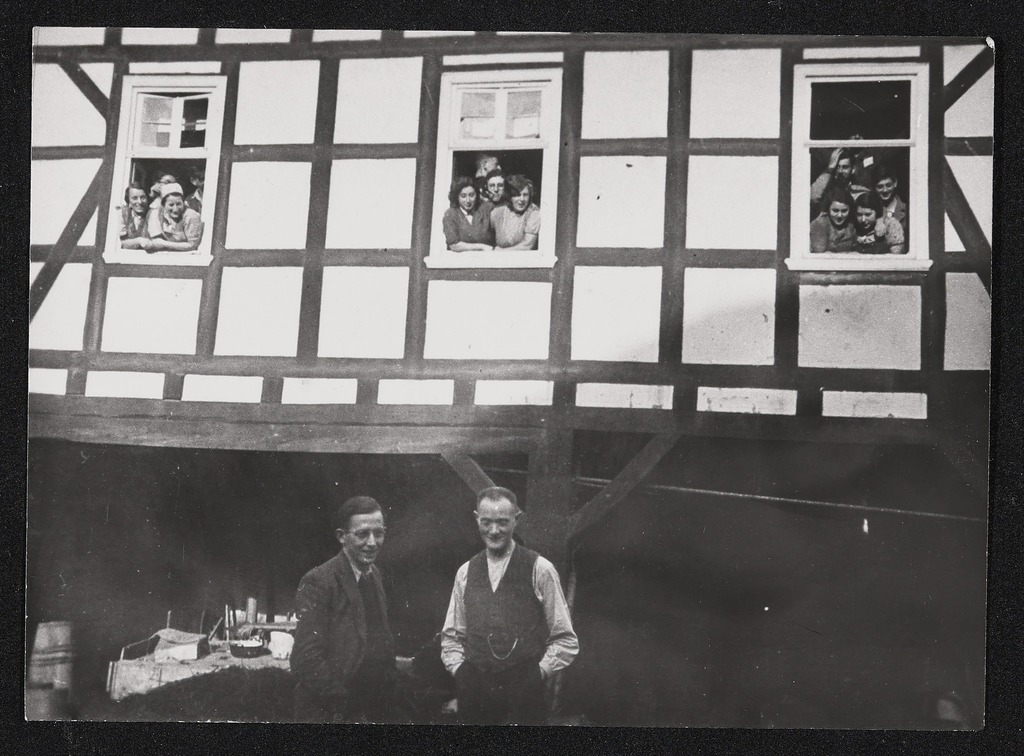
© Frankenberger Geschichtsverein, Nachlass Heinz Brandt

© Frankenberger Geschichtsverein, Nachlass Heinz Brandt

© Frankenberger Geschichtsverein, Nachlass Heinz Brandt
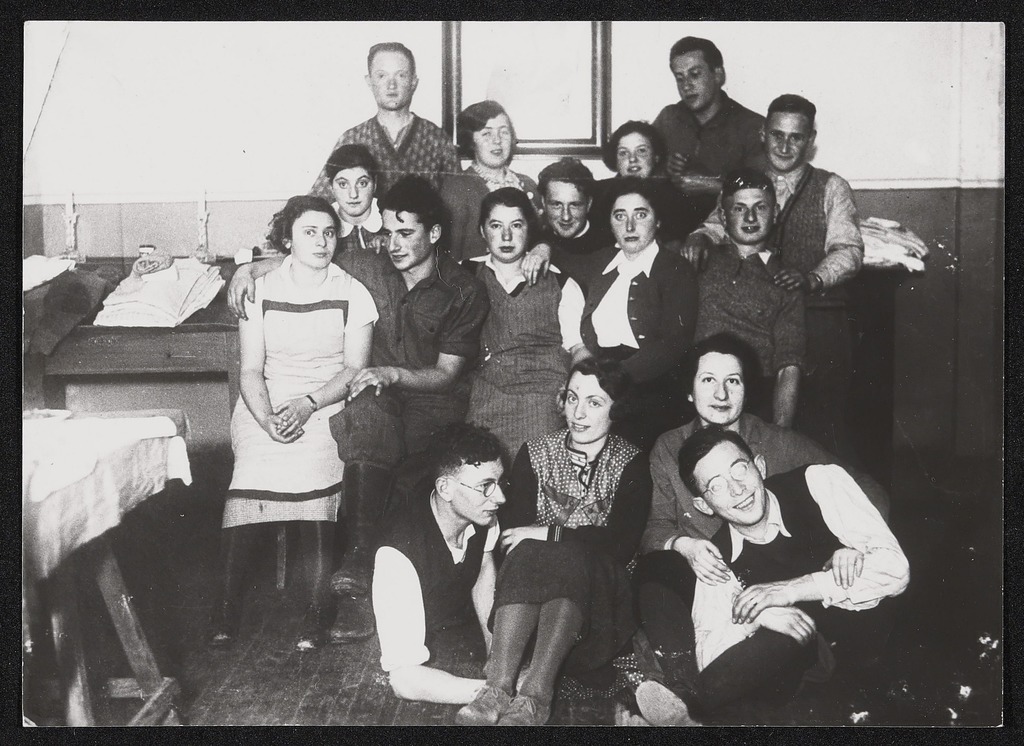
© Frankenberger Geschichtsverein, Nachlass Heinz Brandt
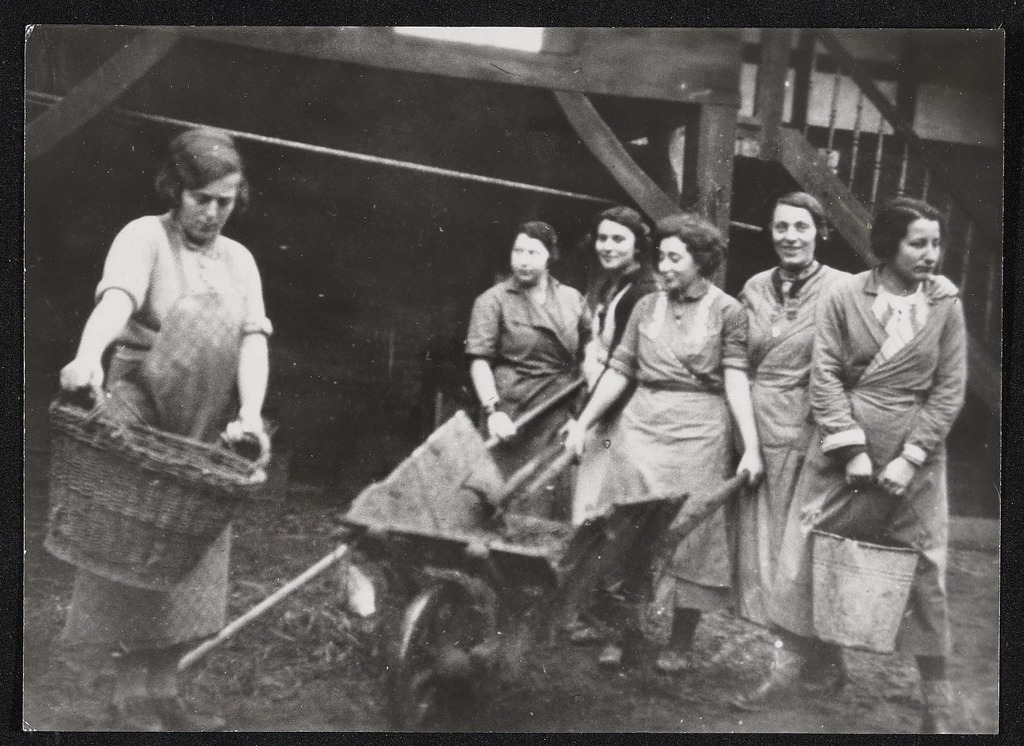
© Frankenberger Geschichtsverein, Nachlass Heinz Brandt
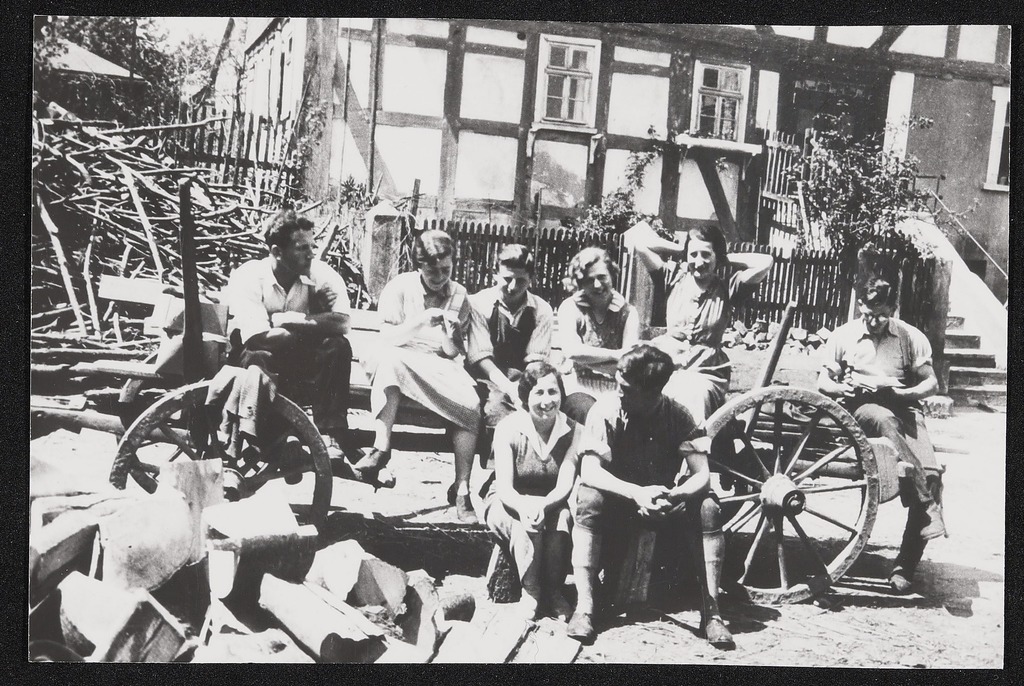
© Frankenberger Geschichtsverein, Nachlass Heinz Brandt
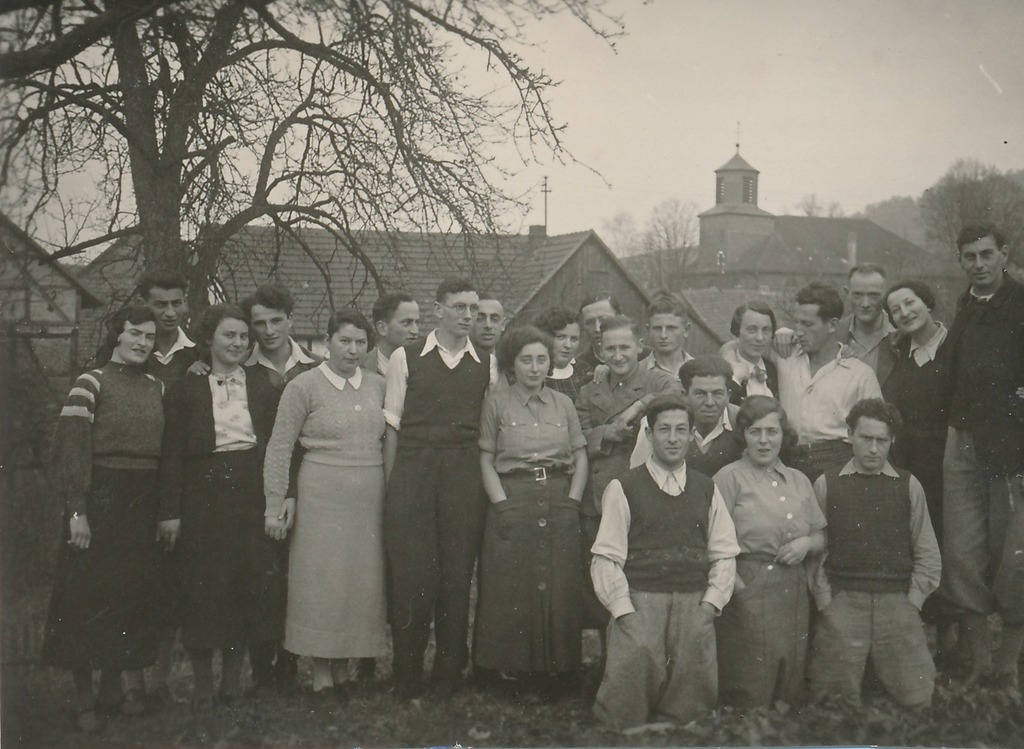
© Frankenberger Geschichtsverein, Nachlass Heinz Brandt

© Frankenberger Geschichtsverein, Nachlass Heinz Brandt
- State of Conservation
-
partially preserved
The dance hall of the former restaurant Marx, which served as communal accommodation for participants in the agricultural training courses in the Hagschamah kibbutz in Grüsen, was demolished after 2002.
- Related Organizations
-
Hechaluz. Deutscher Landesverband (sponsor)
- Related Persons
-
Laske, Ernst (director)Koopmann, Louis (director)
- Sources and Notes
-
Vom Kibbuz Grüsen, in: Informationsblatt des Hechaluz Nr 10. Februar 1937, S. 22–23.
Hessisches Staatsarchiv Marburg, Bestand 180 Frankenberg, Nrn. 1703, 2043, 2619, 2936. - Literature
-
Heinz Brandt: Der Kibbuz Hagschamah in Grüsen 1934, in: Hessische Blätter für Volks- und Kulturforschung N.F. 9 (1979). pp. 70–81.
Horst Hecker: Grüsen, in: Marion Lilienthal; Karl-Heinz Stadtler; Wilhelm Völcker-Janssen (eds.), Novemberpogrome 1938. Ausschreitungen und Übergriffe in Waldeck-Frankenberg, Beiträge aus Archiv und Museum der Kreis- und Hansestadt Korbach und Archiv der Alten Landesschule. Korbach: Marion Lilienthal 2018. pp. 213–227.
Recommended Citation
Horst Hecker, Grüsen (Kibbuz HagShamah), in: Hakhshara as a Place of Remembrance. <https://hachschara.juedische-geschichte-online.net/en/site/6> [November 30, 2025].
Address
Gemündener Straße 235285 Gemünden (Ortsteil Grüsen)